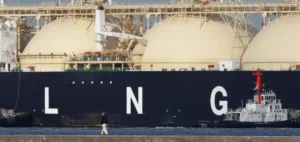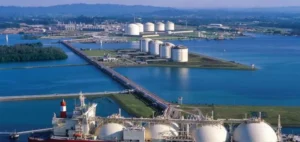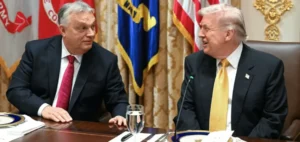Iraq is stepping up its energy strategy to achieve gas self-sufficiency within the next five years.
The government announced in September that the country is currently producing 3.1 billion cubic feet of gas per day (Bcf/d), up from 2.9 Bcf in 2022.
This increase is based on a number of initiatives, including the development of new gas fields, such as Mansooriya, which is expected to supply an additional 300 million cubic feet per day (MMcf/d) within four to five years.
This project is part of a consortium involving Petro Iraq and the Chinese company Jera, with the aim of meeting the country’s growing energy needs.
At the same time, Iraq is continuing its efforts to reduce gas flaring, a common practice that wastes a precious resource and affects the profitability of production.
Flaring is one of the major challenges for the authorities, who are seeking to capture these gases and reinject them into the domestic network.
A significant reduction in flaring would not only increase the production of usable gas, but also reduce the country’s dependence on energy imports, particularly from Iran.
The strategic role of foreign investment
The modernization of Iraq’s gas infrastructure relies heavily on partnerships with foreign companies.
In April, several agreements were signed with American companies to develop gas production capacity, notably with GE Vernova and Baker Hughes.
These contracts come at a time when the United States is actively supporting Iraq in its quest for energy independence, wishing to reduce Iran’s regional influence.
Total is also leading a consortium alongside Basrah Oil Company and QatarEnergy to recover flared gas from several oil fields.
This gas will then be used to fuel local power plants, thus limiting the country’s recurrent power cuts.
This type of initiative is essential to stabilize the power grid, which is particularly stressed during periods of extreme heat.
Towards a reduction in imports
One of the Iraqi government’s main objectives is to reduce the country’s dependence on gas and electricity imports, particularly from Iran.
Iraq still imports much of the electricity it uses, due to insufficient domestic production.
These imports are regularly subject to US sanctions, further complicating the situation for the Iraqi authorities.
To overcome these difficulties, the country has signed agreements to increase its own production capacity, notably by capturing gas that is currently flared.
According to recent statements by the Iraqi Oil Ministry, the country is no longer dependent on imports of diesel and white oil.
This represents a major step towards energy independence.
However, complete gas self-sufficiency can only be achieved with further investment and ongoing modernization of existing infrastructures.
Challenges and opportunities
Despite the progress made, Iraq faces many challenges.
The country continues to experience power cuts, particularly during the summer months when energy demand is at its peak.
These interruptions have provoked social unrest in some parts of the country, increasing pressure on the government to speed up the implementation of its energy strategy.
Despite these difficulties, opportunities abound for foreign investors.
Iraq’s energy sector remains attractive due to its vast untapped resources and the urgent need to modernize infrastructure.
The United States, in particular, is seeking to strengthen its influence by supporting Western investment in this sector, and recent discussions between Iraqi Prime Minister Mohammed Shia al-Sudani and US Secretary of State Antony Blinken illustrate this dynamic.
The reopening of the Iraq-Turkey oil pipeline is also seen as a key element in attracting new investment.
This pipeline, crucial for oil exports, would enable Iraq to diversify its outlets and consolidate its economic relations with Western partners.
Long-term outlook
Iraq’s ambition is to position itself as an independent energy player in the region, capable of meeting its own needs and reducing its imports.
However, this goal can only be achieved if current projects come to fruition and the country continues to attract foreign investment.
Gas self-sufficiency, announced for 2028, is an ambitious but achievable goal, provided that infrastructure continues to be modernized and investment flows are maintained.
The development of gas fields such as Mansooriya and the reduction of flaring are key steps in this process.
At the same time, cooperation with foreign companies such as GE Vernova, Baker Hughes and Total testifies to the importance of international partnerships in modernizing Iraq’s energy sector.
Nevertheless, regional instability and fluctuating energy prices could represent further obstacles to achieving these goals.






















